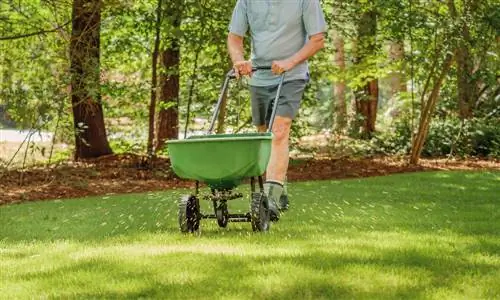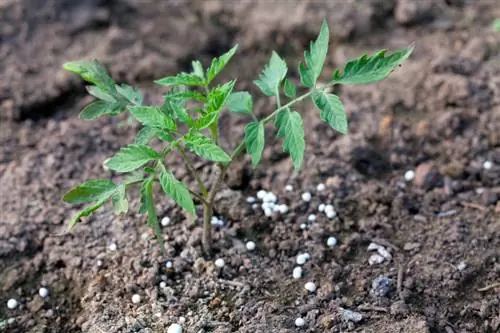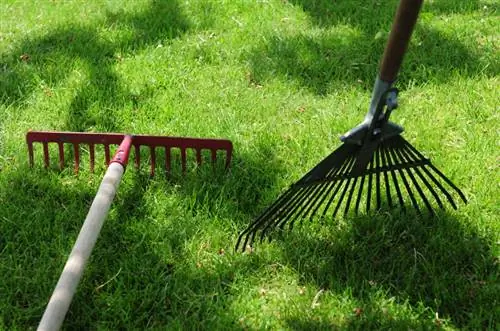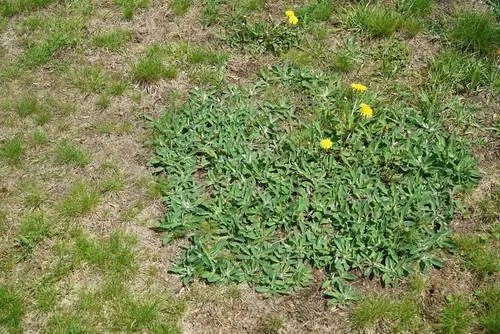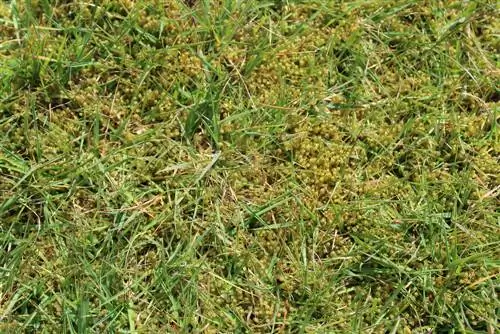- Author admin [email protected].
- Public 2023-12-16 16:46.
- Last modified 2025-01-23 11:22.
The lush greenery in the garden does not develop automatically. The lawn also needs a lot of attention and care throughout the year because it is one of the areas that are particularly stressed. When it comes to fertilization, hobby gardeners face an important obligation.
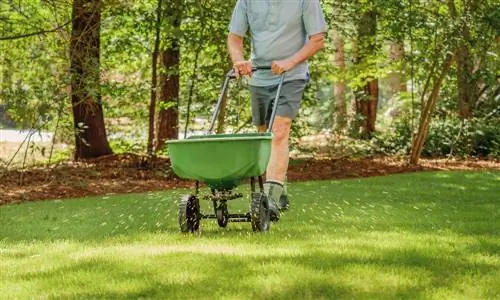
When and how should you apply lawn fertilizer?
Lawn fertilizer should be applied several times throughout the year: in March after the first mowing, in June for energy supply, in August when there is heavy use and in October with potassium-rich autumn fertilizer. Ideally fertilize in the morning or evening and use a suitable NPK fertilizer or organic fertilizer. After fertilization, irrigation is recommended for better nutrient absorption.
Time and frequency
Lawn requires nutrient supply several times a year, which is tailored to the respective growth stage. Lawns are the garden areas with the highest nutrient requirements, because weekly mowing and clearing of green waste removes many nutrients from the cycle.
Fertilization calendar:
- March: Apply long-term fertilizer immediately after the first mowing
- June: Top fertilization to recharge your batteries
- August: optional fertilization for heavily used areas
- October: potassium-based autumn fertilizer to promote winter hardiness
Time of day
Do not fertilize in the blazing midday sun. The components can quickly cause burns if they stick to the green parts of the plant. Ideally, you should administer the nutrients in the morning or evening.
Suitable lawn fertilizer
Mineral NPK fertilizers have a balanced ratio of nitrogen, phosphorus and potassium. For each garden crop there are products with different concentrations of these nutrients. While low-nitrogen mixtures are used for flowering plants, nitrogen-rich versions are used on lawns. These promote the growth of green stalks. A conventional universal fertilizer (€33.00 at Amazon) is unsuitable for grasses. When purchasing, make sure that the product is tailored to the lawn.
Organic fertilizers
An organic fertilizer not only has a positive effect on the growth of grass, but also improves the soil sustainably. This prevents over-fertilization and thus brownish discoloration in the lawn. The soil organisms benefit from the administration and make the required nutrients available to plants over a longer period of time.
Preparation and follow-up
If you apply lawn fertilizer with a weed killer, you should water the area before fertilizing. This allows the product to adhere better to the unwanted weeds and achieve its full effect. Irrigate the plain again after two to three days. If you use conventional fertilizer products, we recommend watering for half an hour afterwards. The water ensures that the fertilizer dissolves better and its nutrients penetrate the soil more quickly.

